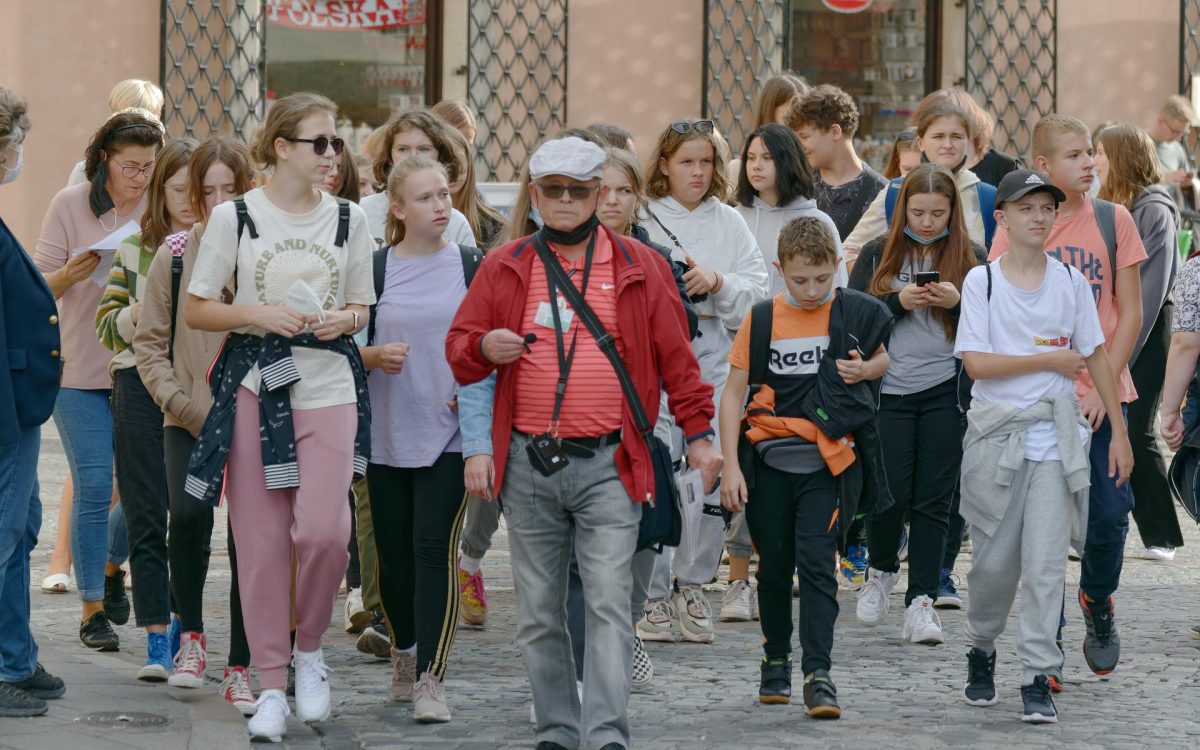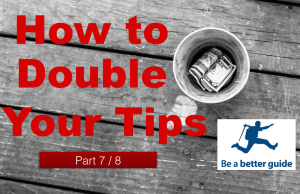If you are interested in ‘How to tell great stories on tour?’ – then you are on the right track!
There is no question, that as tour guides, we should hone and develop our storytelling skills. While many think that you need some ‘natural ability’ or that some people are just born great storytellers – join me in believing that ANYONE can become an incredible storyteller.
Stories are the way that humans have communicated for hundreds and thousands of years. Effective speakers use stories to connect with their audiences and deliver their messages in powerful ways. Business schools around the world use ‘case studies’ and stories as teaching tools and to help students tease out lessons out of real life situations.
By following the tips outlined the above video, practicing and studying the great storytellers in your life – you will be able to captivate audiences and keep people hanging off your every word!
Not only will this make you a more interesting and effective guide, it will help you in a multitude of ways outside of your career.
Let’s dive in and a special thanks to Lynn Neils from Chicago for the inspiration!
-Kelsey T
Finished Watching?
Let me know in the comments below your best story telling tips! How do you tell great stories on tour?
Transcript
Hi, it’s Kelsey from beabetterguide.com and welcome to very exciting pantsless edition of our community Q and A. This is a shout-out to Lynn Neils from the Chicago area. She leads tourists there and reached out practising about storytelling. And actually sharing some of her tips on how she uses storytelling on her tours. And I thought this was a great chance to weigh in on how important story telling is to being a great guide.
So stories are so important and central to the human experience. Before we had writing, we passed along our most important knowledge through stories. Great speakers, if you think of any great speaker, they use stories to get across their points instead of just bare bones facts or things like this. And many schools, business schools, for example the Harvard and Johns Hopkins Business Schools, all use case studies – essentially storytelling – to help make their lessons more sticky.
In this way, your business owner who is your protagonist goes through a struggle or challenges in the business world and then there’s a resolution and outcome. And the students learn and tease out the morals and lessons from that story. So stories are extremely, extremely powerful and you definitely want to use them on your tour. Let’s take a look at the four most important things that you can do to tell better stories.
What is the message? What is the most important information or message that you want to get across to your group? You are obviously choosing to share some information with the people on your tour, but what is the most important message?
We think of these sometimes as the moral, maybe some insights or a lesson, to be drawn from that. Maybe it’s for humour. But whatever that main message is, it’s got to be very clear, because that will allow you to cut all the fat out of your story. Anything that doesn’t contribute to that main message can be cut out and you can be a much more effective storyteller. Quick example, I was leading a tour in France and we started our day on the hilltop where Julius Caesar defeated the united armies of the Gauls.
And this is a very, very important battle. So, there are obviously tons of facts that I could share about that battle in information, but the key message that I wanted to get across was a few points. One, how important this battle was for the future of Europe. Two, how a victory for the Romans wasn’t certain. It was kind of a tension we take it for granted now, but victory wasn’t certain. And lastly, the effects of that, the consequences of that battle echo until this day. So those are the three big things that were my message.
Who is your audience? Every storytelling exercise should begin with, “Who is in the group that I am telling the story to?” Because if I am talking about a building, I’m going to tell a very different story to a group of children and some people from the general public and maybe a group of architects or something like that. You always want common reference points for your audience. They want to be able to relate to the protagonist in some way.
Or, relate to their struggle. So back to my example, there was a biking trip in France. So I knew right away that these weren’t history buffs, this wasn’t an archaeology tour or anything like that. So I needed to keep the tour short and I chose to focus on Julius Caesar, someone who most of the group had probably heard of, and then really focus on the human struggle between these two cultures and which really Caesar was facing in that battle.

Always show, don’t tell. So, a great storyteller will use visual language and sensory language to really get people immersed in the setting where your story is taking place. So for example, again, we’re talking about the Gauls. I had to imagine that they were arising in that camp on top of the hill.
They looked down through the mists and saw the Roman encampment and the smell of campfires and soot, and the whinny of horses. And you’re looking down, you saw the glint of the metal of the Roman helmets. Little details like this and visual language will set the setting much better than a simple date or description or saying, “Oh, it was in this era.” So always use visual language as much as possible.
And practice. That’s one of the most important things honestly. You’re pulling through your stories or the facts and information you give on tour. Try and tease out some characters, some tension, some plot, and then practice telling those short little stories over and over until they’re comfortable. Practice on your friends, video, or whatever you’re comfortable with.
Because storytelling is such a big subject, I wanted to pop up a few more do’s and don’ts for storytelling. So let’s take a look. So don’t overwhelm your story with unnecessary details. Don’t make it too long. Don’t tell a story without tension or a problem or a challenge, especially that people can relate to. And don’t forget to resolve that tension. If you do want to do it, use dialogue whenever possible, and have a beginning, middle, and end. Keep eye contact with your audience.
Always describe the setting, in at least one sentence, and incorporate pauses to pace your story. So in the comments below, let me know your best storytelling tips. How do you tell great stories on tour? Share this video if you’re inspired. Thanks for being here.
What else are you working on?
If you’ve poked around the site a little bit, you may have seen that I am working on a ‘rock-your-socks-off’, brand-spanking new online course for tour guides, tour managers and tour operators. What will it be about? Well, basically, I will be sharing a step-by-step system to help tour leaders to make more money, get better reviews and earn more customers! Sounds cool, right?? Well, fear not, I’ll make sure that you are the first to know when this course is open for enrolment!




